How Strangers Made $175 Million With This
I would say the one magic wish most traders would like to be granted, would be to be able to see into the future. In the last 7 months, I was able to make more than 64% profit through the stock market. That’s beating the stock market index by 3 times. I wish I could say this profit was made by looking into the future, but it was not. It was made by using 3 strategies and following a few simple rules. If I can make money in trading, anyone can if taught properly. That is pretty much what the Chicago trader Richard Dennis, who had turned 5000 dollars into 100 million dollars, said in the 1980s. His partner William Eckhardt, disagreed and believed either you’re born with trading skills or you’re not. In 1983, this debate led to an interesting real-life social experiment, in which they recruited a group of random people for two trading classes.
Dennis and Eckhardt were going to share their proprietary trading concepts with these random people to see if anyone can make good money in trading. They called this group the “Turtle Traders”. The word “Turtle” was the nickname Dennis used for his students inspired by a turtle-breeding farm he had visited in Singapore. “We are going to grow traders just like they grow turtles in Singapore”, he said.
Once Dennis and Eckhardt had shared their proprietary trading concepts, Turtle Traders were only allowed to trade for Richard Dennis and were not allowed to trade futures for themselves or others. Each student received 1 million to trade. If the student made money, they received 15% of the profit, while Mr. Dennis got 85%. Learning from a multi-millionaire and trading with his money? It was like winning a lottery.
However, when the two weeks class started, one of the first topics the Turtle Traders were taught was not about the money-making strategy, it was about Managing Risk. You see, Dennis understood probabilities and used calculated risks to his advantage. The strategies Turtle Traders were going to learn were high-risk strategies. There was no buying low and selling high, it was a high-risk high reward. So it was important for the traders to understand risk management more than anything else.
Turtle Traders were also taught to disassociate the dollars from trading. If the amount lost in dollars is less, people don’t worry that much. But if the amount lost in dollars is high, then emotions kick in, and bad decisions are made. Turtle Traders were taught to consider losses in percentages and not in amounts of money. If you have 10,000 dollars and lose 200, it’s not a big deal, it’s only 2% of the total account. If you have 10 million dollars and lose 200,000, it’s still not a big deal since it’s only 2% of the total account. Dennis and Eckhardt wanted their students to see trading as a probability game. They wanted to make it very clear that if you break the Risk Limit and don’t protect the capital, the probabilities will soon catch up.
Dennis since his early twenties believed that looking at the news for stock tips was not a good idea. If acting on the news was the real key to success in trading, everyone would be rich. He wanted Turtle Traders to make their decisions by looking at the price directly.
In Dennis’s early floor trading days, he made money by trading seasonal spreads. In simple words, Dennis would make money by holding long and short futures positions simultaneously. Turtle Traders on the other hand were trained to be trend-following traders. This shift in strategy was mainly influenced by Richard Donchian, who was a well-known trend trader with a positive record from the 1950s to the 1970s.
After losing money in the market crash of 1929, Richard Donchian started studying Technical Analysis. He then developed his own rule-based technical system which became known as “Trend Following”. The rule was pretty simple: When the price breaks above the high of the previous two weeks, you close your short position and buy. When the price breaks below the low of the previous two weeks, you close your long position and sell short. Later, Richard Donchian wrote many articles on securities and futures trading and became known as “the Father of Trend Following”. He also developed the popular Donchian Channel Indicator, and its trading strategy was one of the best strategies we have ever tested 100 times on the Trading Rush Channel. It ranks 2nd from the top on the TR Score chart.
You see, Trend Trading was good for Turtle Traders because Trading the Trend is not about forecasting the direction of the price move, it’s more about riding the price move. Trend traders don’t even expect to be right every time. However, they still make money in the long run by taking trades in the direction where the price is already heading.
Turtles were also trained to keep things simple, but Dennis and Eckhardt knew there will be mistakes and missed entries. If turtle traders made mistakes on regular basis, their probability of losing money, in the long run, will be high. So one of the main concepts Turtles were taught was to know their edge in the market. See, trading is a zero-sum game. You either have to win more times than the other person to be profitable, or need winning trades many multiple times larger than the losing trades. If you win more trades, you can risk more on a single trade and still have a good probability of making money in the long run. But if you book bigger profits, you can’t risk more amounts on a single trade. That’s because bigger profits will result in a lower win rate, and a lower win rate will result in more losing trades in a row. If you risk more on a single trade and have a big losing streak, you will blow up the account.
Since Turtle Traders were going to book bigger profits than the loss, they were told not to use more than 2% of the total account on a single trade. Furthermore, if they lose 10% of the account, then they had to make their trading decisions based on the new account size. For example, if the Turtle Trader was supposed to risk 2% of the 10000 dollar account, but the trader lost 10%, they now have to risk 2 percent of 9000 dollars.
Turtle Traders were trained to trade “breakouts”. The idea was to catch the start of a strong trend and stay in that trend for as long as possible. For example, if the price gives a 30-day breakout in the upward direction, or in other words, if the price makes a move higher than the highest price of the previous 30 days, the Turtle Traders would buy. To exit a long position, Turtles had to wait for a breakout in the opposite direction. For example, price breaking below the 15 days low.
If the price gives a 30-day breakout in the downward direction, or in other words, if the price makes a move lower than the lowest price of the previous 30 days, the Turtle Traders would go short. To exit a short position, Turtles had to wait for a long breakout. For example, price breaking above the previous 15 days high.
In both of these entry methods, the Turtle Traders were instructed to risk 2% of the total account per trade. If the account size was 1 million, then the position size was calculated in a way that when the stop-loss gets hit, the loss would be only 20000 dollars, which is 2%.
The exact Turtle Trading Strategy is now protected by copyright laws, but basically, it was a breakout strategy that tried to take a position at the start of a new trend, no more complex than the strategies most traders use today.
Turtles were made very clear that if two traders with the same account size were facing the same situation in the market, they both should take the same optimal course of action. They both should place the same trade. If the Turtles couldn’t follow the mentioned rules, they were out of the experiment. Basically, Eckhardt and Dennis wanted their students to understand that they are not special and definitely not smarter than the market. They did not want Turtles to make decisions because they felt smart or lucky. Since Turtles were told to exit trades when there was a breakout in the opposite direction, they had to watch 10 to 50 percent of their unrealized profit disappear before the exit signal appeared. This made sticking to the rules challenging for some. But those who followed the rules remained in the experiment and made huge profits in the long run.
In the next 5 years, the Turtle Traders with the Breakout Strategy ended up making more than 175 million dollars in total. Several Turtle Traders after the experiment have gone on to have professional careers in trading.
But it wasn’t just about the breakout strategy, was it? Richard Dennis and Turtle Traders showed that with the right mindset, with proper rules, proper money management, anyone can be profitable in trading. And that’s exactly how I made more than 64% profit in the last 7 months. I didn’t use the Breakout Strategy like Turtle Traders because we have tested way better strategies 100 times on the Trading Rush Channel. I used the MACD strategy that got the highest win rate, the Volume Weighted Average Price strategy, and took trades near strong support and resistance areas with pretty much the same trading concepts taught by Richard Dennis to Turtle Traders:
- Trade with the trend! We don’t want to predict the reversal of the price movement, we want to take trades in the direction where the price is already heading.
- We want to book more profits than the loss. We want to capture bigger profits when we are right about the direction and book smaller losses when we are wrong.
- We want to know our edge in the market. Trading is a probability game. We want to know how many times we can lose in a row, so we can manage risk and not blow up the account. Remember, one of the first things Turtle Traders were taught was Risk Management.
- And most importantly, we want to use the KISS principle as much as possible. KISS, an acronym for “Keep It Simple, Stupid”, is a design principle noted by the U.S. Navy in 1960. The KISS principle states that most systems work best if they are kept simple rather than made complicated.
That’s all! Get Trade Alerts, see how I take high probability trades with the current best strategies by supporting Trading Rush on Patreon. Thanks for Watching!

